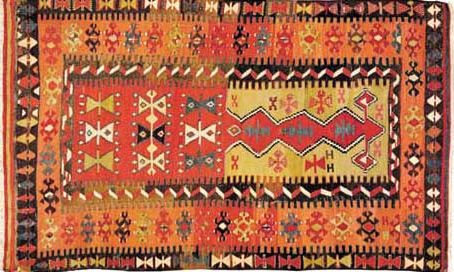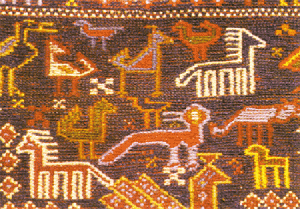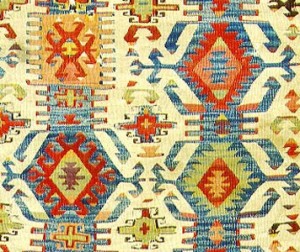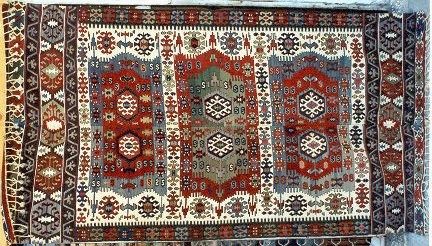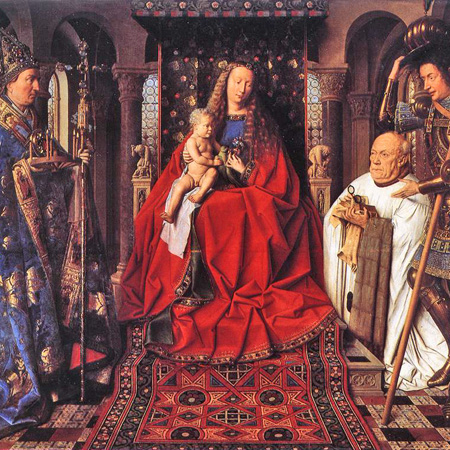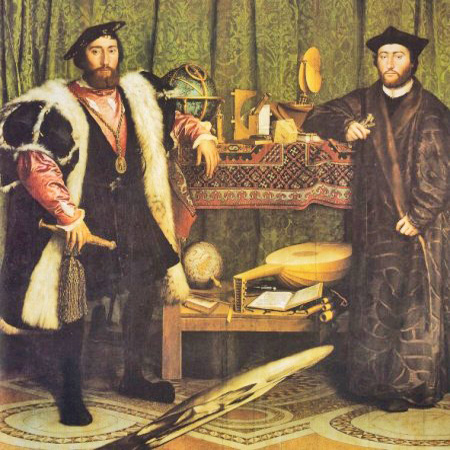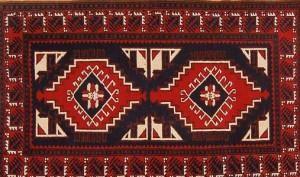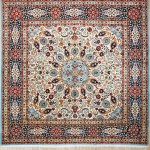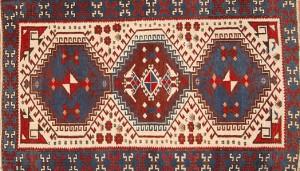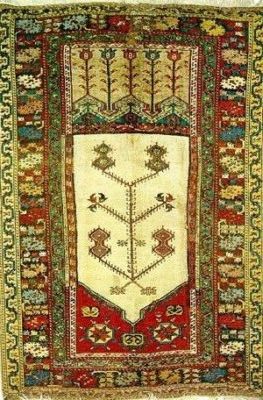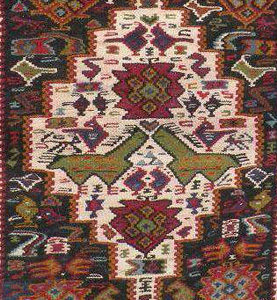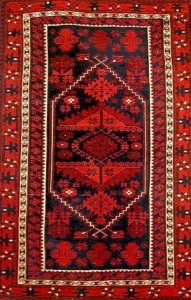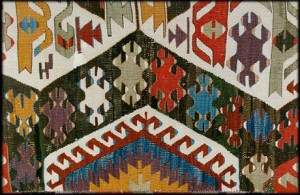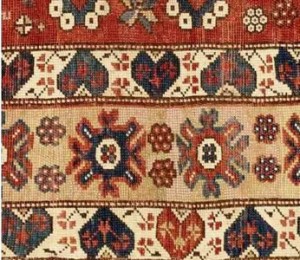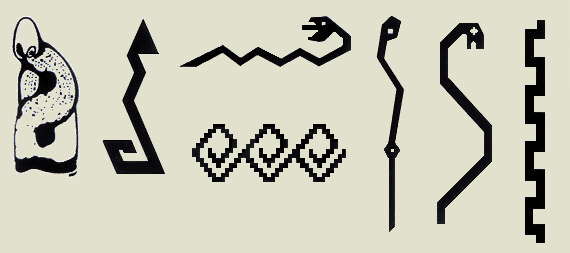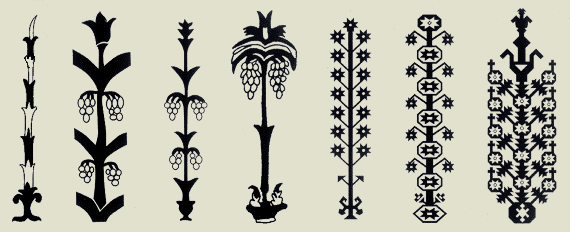Reflections on Anatolian rugs and kilims
Anatolian carpets and rugs, with their colors, motifs, patterns and superior quality, have a universal reputation since very long years. However, those interested in ancient history, will find the investigations into kilim origins a fascinating look at ancient civilizations.
Neolithic Goddess cult may give evidence of earlier kilim weaving
It is obvious that the Turkish kilim rug has ancient origins. But it is not sure if it had arisen in a Neolithic goddess cult, or arrived later with Turkmen nomadic tribes. According to archaeologists working at CATALHOYUK, evidence of kilim weaving has been unearthed in the excavations of Neolithic cities in Anatolia, such as Catalhoyuk (“Forked Mound” in Turkish) a 7000 year old settlement, in south central Turkey. This ancient city, whose economy was mainly agricultural, is one of the world’s oldest settlements. Ongoing excavations continue to reveal exciting finds. Wall paintings were also found on the plastered walls of many of the buildings. Archaeologist Charles L. Redman describes these murals in The Rise of Civilization: “Some of their designs were linear or geometric, resembling designs commonly used by weavers . . . because of the similarity of these designs to those of traditional Turkish kilims (flat-woven rugs), the people of Catalhoyuk may have woven kilims.” This tantalizing snippet of information gleaned from excavations at Catalhoyuk suggests that those Neolithic people may have developed weaving into a useful art form. It seems that the inhabitants of Catalhoyuk chose to reproduce the woven designs in paint. Perhaps even then the motifs were acquiring deep religious and cultural significance.
Nomadic Turkish groups
Carpet-weaving appears very early in all regions inhabited by nomadic Turkish groups. The oldest known knotted Turkish carpet known as the Pazyrik carpet, was discovered in a barrow-tomb in the Altai Mountains, which dates back to the 4th century BC. The Turkish arts of textile-making and carpet-weaving flourished particularly in Anatolia where some of the world’s finest carpets were woven in centers such as Konya, Usak, and Bergama during the Seljuk, Feudal, and Ottoman periods.
Reflections of Shamanic beliefs
In the course of time kilims were woven with some patterns to avoid the wrath of nature like storm, flood, heat, cold, death or wild animals sent to them by gods. Before that, they used to inscribe the symbols on rocks. Later they put the kilims in graves.
Cultural Interactions
Turkey has inherited a vast culture from the past. The Central Anatolian plateau is considered one of the cradles of civilization. Here the Hattis, Hittites, Phrygians, Galatians, Romans, Byzantines, Seljuks and Ottomans established their rule. For 10 millennia of history, the people of Anatolia have reflected the culture in their art. Traditional Turkish textile based on handcrafts were inspired by a rich source molded and shaped by numerous cultures succeeding each other for thousands of years.
Turkish rugs and kilims in European paintings
Anatolian carpets and rugs, with their colours, motifs, patterns and superior quality, have a universal reputation since very long years. During the 14th., and 16th. centuries, Turkish rug designs appeared prominently in many European artists’ paintings, with the rugs so depicted being of Anatolian origin. These paintings were subsequently named for the respective artists, for example, Holbein, Lotto, Memling, Van Eyck, etc. In the beginning of the 16th. century, every European prince owned a private carpet collection. (Herman Haack, Echte Teppich- Eastern Rugs). In Vienna, the people were allowed to own rugs after 1671. When the Turks left Vienna, many Turkish rugs were left behind in their tents. This allowed fine Turkish carpets to become known by the Europian populace. A short time thereafter, the kings and queens of Europe began to open their castles and palaces, as well as their residences, to visitation by their subjets. This in turn, spurred European interest and thereby dramatically increased the demand for hand-knotted Turkish carpets.
An outstanding handicraft by women
Kilim weaving is an outstanding handcraft with its traditional taste and motifs in different colors and lines which are now reflected in modern home decoration. Kilims have been used by women as mediums to express their feelings relating to love, death, fear through the patterns, motifs they weave; because women were the weavers while her man was at hunt or war. So, it is obvious that a kilim rug has its own individual “sub-text”, its own wealth of inherent intellectual, artistic, emotional and sensory messages . That’s, kilims are cultural and psychological chronicals of the society so, it is a must to disguise the motifs on kilims, because they may help inform us about Turkish culture and family structure of the past ages. Kilim rugs must be regarded as an expression of abstract art at the most creative and profound level, reflexions of collective thoughts, experiences and emotions.
Inscriptions of Turkish Culture
Owning a carpet or kilim means two things; first having a beautifully crafted piece of art with harmonious colors and exciting patterns with which to decorate the house. Second, it is like taking a page out of an Anatolian native’s life, a page out of a history of a rich, though sadly vanishing tradition Turkish rugs, carpets and kilims may be considered as important inscriptions of Turkish Culture. They reflect the signs of social lives, economic structure and aesthetic norms as well as the dreams of the viewer, depending on the period in which they were woven. As you stroll around the colors and motifs of Turkish rugs, you witness happiness, dreams, sorrows, hopes, wishes and desires of Anatolian woman. Every Turkish rug is a letter written by the weaver. Each motif on Turkish rugs, which is stylized in accordance with the weaving technique, is attributed to symbolic expression of nature.
Understanding the Language of Motifs
Most Turkish kilim designs have their roots in the conservative, indigenous, pre-Christian and pre-Islamic backgrounds of the rural population and are related to the basic themes of life: birth, marriage, fertility; spiritual life and happiness; love and unison; and death. They reflect the ancient cults and practices of their ancestors around these events. Experts believe that to truly understand the language of Kilims, one must look at their component motifs, as well as at the whole that they form. More importantly, the motifs are best understood interpretively. In order to `read’ a Kilim like the tribal chieftain did in the story, one needs to understand the vocabulary as well as relate on the instinctive level to the inner world of the weaver.
Reading a Kilim Rug
“Reading” a carpet’s specific language means to unravel its individual syntactical structure and meaning, the cultural, social, religious status, living standards of the time, as well. This symbolism may have esoteric connotations or religious significance. If the symbolic language in the kilim rugs has been assimilated, it is possible to decipher the whole spectrum of the symbols and overall design which mostly originated from the mythology, ancient beliefs and cultures. It is a fact that each weaver, each group imposes its own variations on a style that is “universal” and on a language “common to all” . French author André Malraux called it “boundless universality of form”
A Brief Vocabulary of Kilim Motifs
A Brief Vocabulary of Kilim Motifs
There are many symbols in the vocabulary of the Kilim weaver, and many stylizations of each symbol. The meaning of different symbols can change depending on the symbols it is paired with.
Hands on Hips
At an early stage all superhuman powers were represented by goddesses. This motif is only shown when the weaver gives a birth to a boy. It is the symbol of motherhood and fertility. The hands on hips shows that she is very proud.


From mother goddess to “hand on hips”
Fertility motifs

Earings
Family Signs

Ram’s Horn
The ram’s horn denotes fertility, heroism, masculinity and power. The fertility pattern is composed of two “hands on hips” motifs indicating the female and two “ram’s horn” motifs indicating the male.
S t a r
The star motif on an Anatolian weaving generally means happiness. The six pointed star generally known as the “Solomon’s Seal” has been used in Anatolia since the time of the Phrygians who lived long before the time of Solomon.
W a t e r l i n e
Since it has a great importance for mankind, the theme of running water is widely used on works of art. It denotes life itself. It has a curving shape like a river. The shape makes you associate a river course, so it is indexical. It stays almost the same in the course of time.
H a n d / C o m b
Comb motif is largely related with marriage and birth. It is used to express the desire for getting married and to protect birth and marriage against evil eye. The number of fingers on the hand, which is five, is used as a protection against evil eye. In Anatolia the concepts of fertility and motherhood which imply birth are closely related.
Eye/Evil Eye and Amulets
It is believed that some people possess some power in their glance which causes harm, injury, misfortune and even death. Therefore it signifies a bad look from the eye and its most simplified form, a triangle, is used. Evil eyes are various objects believed to have a magical and religious power to protect the possessor from dangerous external factors and reduce the effect of evil glance. It is iconic and stayed the same through the centuries.
Cross:
Another motif used against evil eye is the cross formed of a vertical and horizontal line. According to the Anatolian belief the cross reduces the power of the evil glance by dividing it into fourpieces. The motif dates back far before Christianity.
Hook
Another Anatolian motif used against evil eye is the hook. There is an iconic relation between the sign and the signifier.
Wheel of Fortune
It is a star with 8 points. There is a cross inside it; in the center an ornament can be seen signifying the sun. In earlier communities dealing with agriculture used it mostly.
Animal Motifs
From the earliest times people have believed that by imitating, or weaving part of a dangerous animal, they will have power over it. That’s why animal motifs are so common.
Snake
The history of mankind is closely related with snakes. All the stories of existence include the theme of a serpent offering Eve the forbidden fruit.

Fatter
Fatter is a sort of cuff placed on the front legs of horses to keep them from running away. It symbolizes harmony and unity of lovers, the continuity of the family union, the devotion of the lovers and the hope that they should always stay together.
Dragon
Dragon, believed to be a great serpent, is the guard of treasures and secret objects as well as the tree of life.

Birds
Bird motifs have various meanings; eagle, falcon and hawk represent strength and power, the phoenix and the dragon fighting symbolize the comming of spring rain; Birds can symbolize the celestial messenger and longevity. Owls and ravens imply bad luck, while doves, pigeons and nightingales symbolize good luck. Bird is the symbol of happiness, joy and love. It is the soul of the dead. It is longing, and expectation of news. It stands for power and strength. In Anatolia there is no other motif carrying so many different meanings than that. All bird signs are iconic. The form and the content (sign and the signifier) are in harmony.
Scorpion
Due to its fatal venom at the end of its tail, people protect themselves against this animal and use its sign to protect themselves against other evil things.
Wolf’s Print/Wolf’s Track/Monster’s Feet
People use this motif as a means of protection against wolves.
Eternity/Life Tree
The tree is the common theme for all religions believing in a single god. Its fruit which is believed to bring immortality, is forbidden to Adam and Eve. But the serpent waiting the tree convince Eve to eat it. Mankind, failed to keep his swear, put all his hopes on the life after death symbolized by a tree of life. Different cultures have used different plants such as cypress, date, palm, pomegranate, fig, olive, wine, beech and oak to symbolize the tree of life. In Anatolia the prominent figure is a cypress tree.
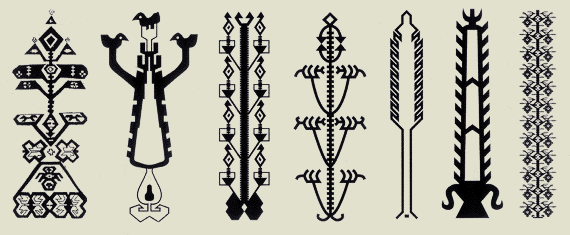
_________________________________________________
Ref:
* Redman, Charles, L., The Rise of Civilization: from Early Farmers to Urban Society in the Ancient Near East, New York: W.H. Freeman, 1978.
*Reading Motifs on Kilims ../ Assist. Prof. PhD. Nurdan Taskiran-Kocaeli University.
*Publications of; Ministry of Turizm and Culture-Turkey


